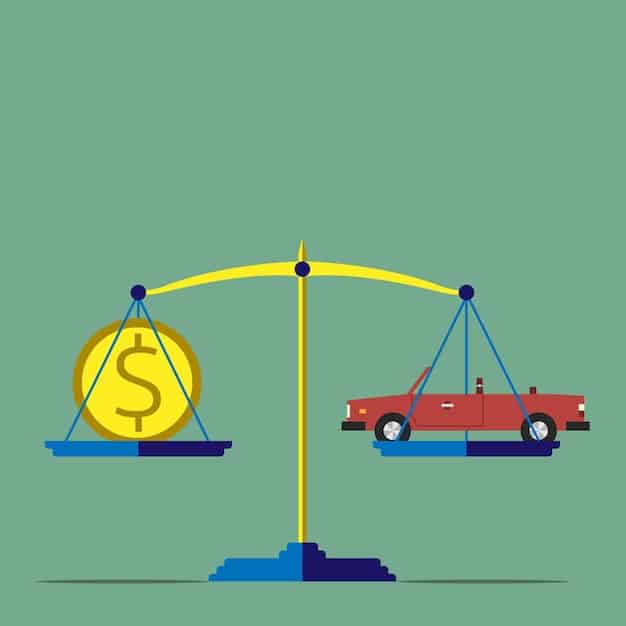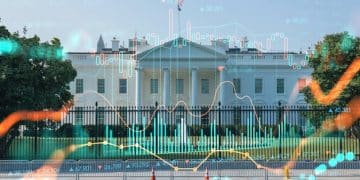2025 Budget Proposal: Impact on US Spending and Deficit Reduction

The 2025 budget proposal significantly influences US federal spending and deficit reduction through proposed allocations for defense, social programs, and infrastructure, potentially reshaping economic priorities and fiscal responsibility.
Understanding the fiscal implications of the 2025 budget proposal on federal spending and national deficit reduction is crucial for stakeholders. This article delves into the specifics of this proposal and its anticipated economic effects.
Analyzing the Core Components of the 2025 Budget Proposal
The 2025 budget proposal is a comprehensive financial plan outlining the US government’s spending and revenue projections. Understanding its core components is essential to grasping its potential impact.
This section will explore the major allocations within the 2025 budget, focusing on areas like defense, healthcare, education, and infrastructure. We will also examine any proposed changes in tax policy.
Defense Spending and National Security
The proposed budget allocates a significant portion to defense spending, reflecting ongoing national security priorities. Discussions will revolve around the allocation to military modernization.
Healthcare and Social Programs
Healthcare and social programs constitute a substantial part of the federal budget. Consider investments in Medicare, Medicaid, and Social Security.
- Increased funding for medical research to combat emerging diseases.
- Expansion of access to affordable healthcare options for low-income families.
- Enhanced support for elderly care and social security benefits.
Understanding the core components of the 2025 budget is crucial for understanding its potential impact. By examining the major allocations and proposed changes, we can better analyze its implications for federal spending and deficit reduction.

Impact of the Budget on Federal Spending Projections
The 2025 budget proposal sets the stage for federal spending projections, outlining how government funds will be allocated across various sectors.
Examining the budget’s impact on spending projections involves comparing the proposed allocations with current spending levels. Potential shifts in spending priorities might be highlighted.
Projected Increases in Key Sectors
Certain sectors may experience projected increases in funding under the 2025 budget proposal. Potential for increased spending in renewable energy projects might be discussed.
Potential Spending Cuts and Their Consequences
Conversely, some areas might face potential spending cuts. The effects of reduced funding for specific social programs might be discussed.
- Reduced investment in public education, potentially affecting schools nationwide.
- Scaled-back funding for environmental protection, leading to increased pollution concerns.
- Limiting resources for disaster relief, hindering recovery from natural disasters.
This overview shows the impact of the budget on federal spending projections. Comprehending these shifts is crucial for assessing its effects on government operations and national priorities.
Analyzing Deficit Reduction Strategies in the Proposal
A central goal of the 2025 budget proposal is to address the national deficit through various strategies and policy implementations.
This section will dissect the specific deficit reduction strategies outlined in the budget. Emphasis is given to potential policy changes intended to curb the deficit.
Tax Reforms and Revenue Generation
Tax reforms constitute a key element in deficit reduction strategies. Proposals for altering tax rates or closing loopholes to generate additional revenue are scrutinized.
Spending Efficiency and Waste Reduction
Efforts to enhance spending efficiency are essential in reducing the deficit. Proposed measures to streamline government operations and eliminate wasteful spending might be highlighted.
- Implementing stricter oversight of government contracts to prevent overspending.
- Consolidating redundant government agencies to eliminate unnecessary bureaucracy.
- Adopting innovative technologies to reduce operational inefficiencies.
In Summary, strategies within the proposal significantly affect deficit reduction. By analyzing policy changes and revenue generation plans, its impact is better understood.

Economic Forecasts and Budget Assumptions
The 2025 budget proposal hinges on specific economic forecasts and underlying assumptions about economic growth and stability.
Analyzing these economic forecasts and assumptions is critical to evaluating the budget’s feasibility and potential outcomes. The plausibility of the economic forecasts is examined.
GDP Growth and Employment Rates
The budget proposal’s economic forecasts likely include projections for GDP growth and employment rates. A discussion of the projected growth rate and its impact on budget projections is considered.
Inflation and Interest Rate Considerations
Inflation and interest rates also play a crucial role in budget assumptions. Assessing factors for inflation control and interest rates is important.
The accuracy of economic forecasts and budget assumptions plays a vital role in determining the success of the 2025 budget proposal. Evaluating the economic landscape is key.
Potential Winners and Losers Under the Budget
The 2025 budget proposal inevitably creates both winners and losers, as certain sectors and demographics benefit or suffer from its provisions.
Examining the potential winners and losers provides insights into the distributional effects of the budget. Discussions of demographics likely to benefit or be negatively affected are brought forth.
Industries Benefiting from Targeted Investments
Some industries might benefit from targeted investments in specific areas. The benefits of renewable energy sector and other investments is discussed.
Demographic Groups Facing Reduced Support
Conversely, certain demographic groups might face reduced support due to spending cuts. Potential challenges for low-income families and marginalized communities are addressed.
- Small business owners facing higher tax rates and compliance costs.
- Rural communities losing access to essential government services and infrastructure.
- Students struggling to afford college due to reduced financial aid opportunities.
The budget can significantly impact multiple groups. By identifying these groups, a better understanding of the wider social implications is achieved.
Long-Term Implications for US Economic Stability
The 2025 budget proposal carries significant long-term implications for US economic stability, shaping the nation’s fiscal trajectory.
Exploring the long-term implications is essential for understanding the budget’s lasting impact on the US economy. Considerations of long-term implications are presented.
Sustainability of Debt and Entitlement Programs
The sustainability of national debt and entitlement programs is a key concern. Strategies for stabilizing the debt-to-GDP ratio through long-term projections are vital.
Impact on Future Generations
The budget’s impact on future generations cannot be ignored. A conversation about the budget’s effects on future generations is held.
Ultimately, the 2025 budget proposal will significantly affect the US. Through sustained discourse and examination, it’s impact can be predicted with more clarity and better decisions can be made.
| Key Point | Brief Description |
|---|---|
| 💰 Budget Allocations | Defense, healthcare, and infrastructure spending. |
| 📈 Deficit Strategies | Tax reforms and spending efficiency measures. |
| 🎯 Economic Impact | Winners and losers based on investments and cuts. |
| ⌛ Long-Term Outlook | Debt sustainability and impact on future generations. |
FAQ Section
▼
The budget prioritizes defense, healthcare, and infrastructure, with emphasis on economic growth, national security, and social welfare, as well as investment in renewable energy and technology.
▼
The budget aims to cut the deficit via tax reforms to increase revenue and measures to enhance spending efficiency and waste reduction, targeting government contracts.
▼
Sectors expected to see increased spending are renewable energy, healthcare research, and technological innovation, targeting future growth and societal benefit.
▼
The budget assumes moderate GDP growth, controlled inflation, and stable employment rates to accurately forecast revenue and appropriately allocate spending for success.
▼
Beneficiaries include renewable energy industries and those benefiting from social programs, while small businesses and sectors facing budget cuts may face challenges.
Conclusion
In conclusion, the 2025 budget proposal is a multi-faceted plan that aims to shape the trajectory of US federal spending and deficit reduction. While the budget’s success hinges on realizing key assumptions and mitigating potential risks, its long-term implications will influence future generations.





